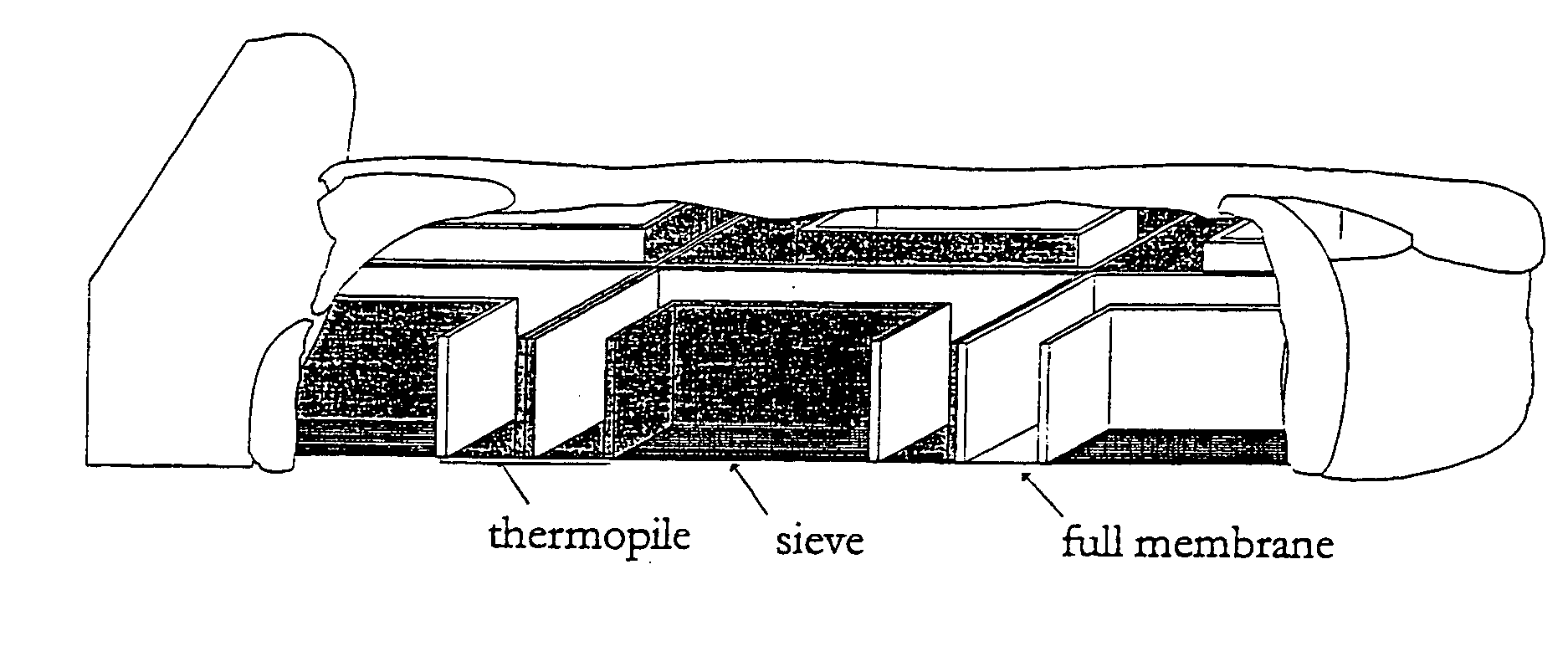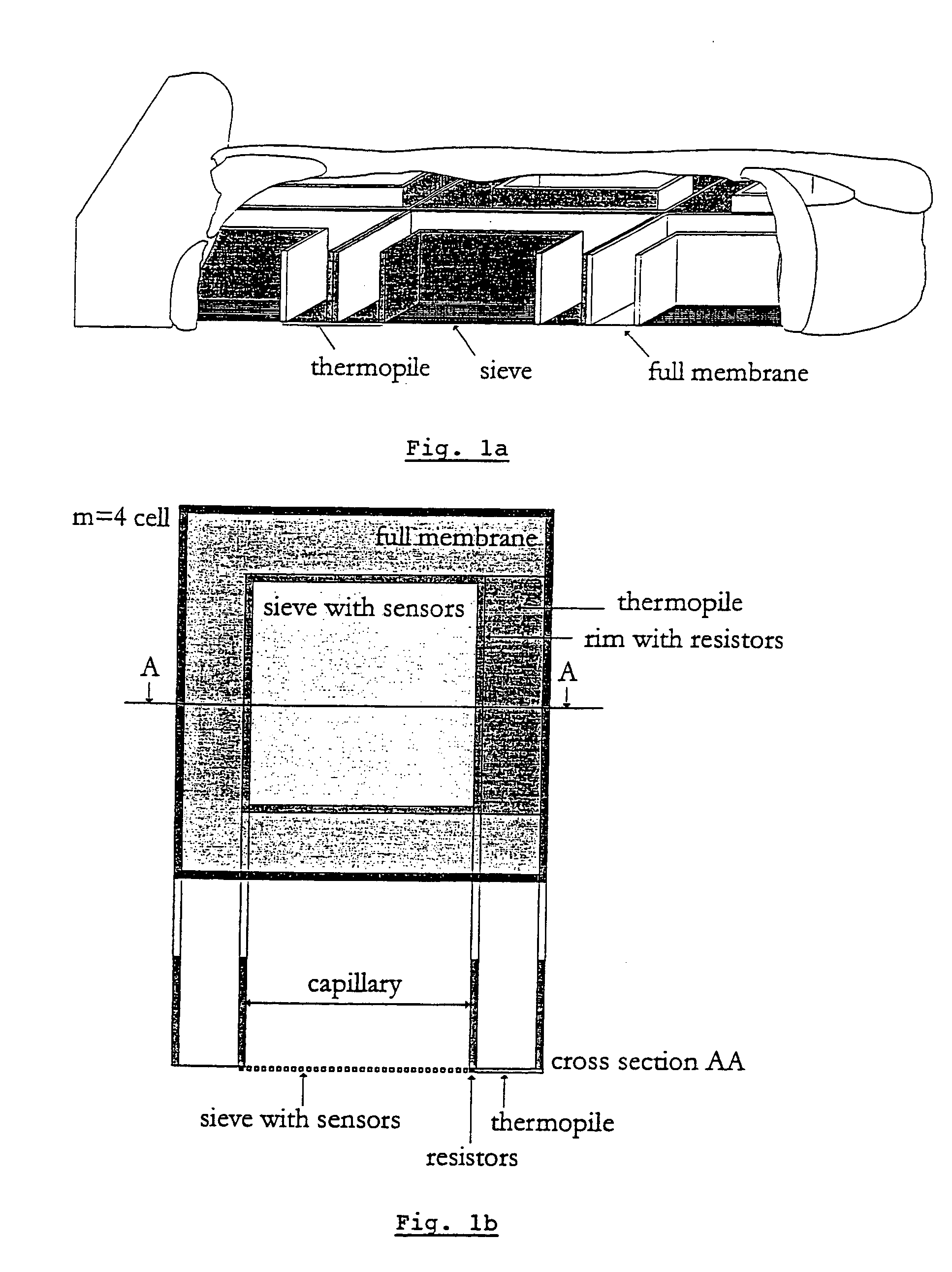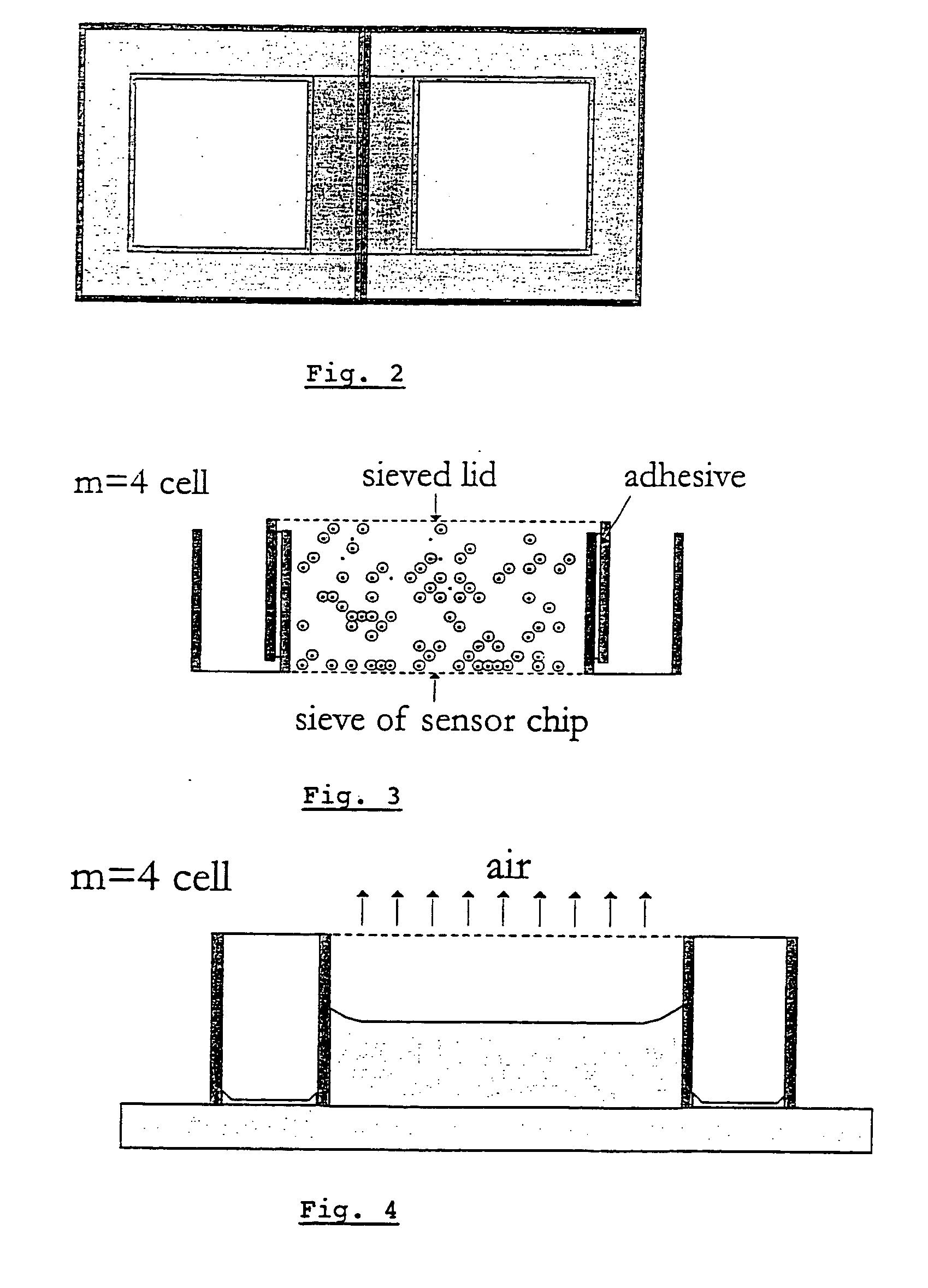Microphysiometer
a microphysiometer and micro-calorimeter technology, applied in the field of microphysiometers, can solve the problems of common rejection mode, non-compatibility of micro-calorimeter batch systems with high-throughput requirements, and problems concerning baseline stability, so as to facilitate the integration of sensors and fluidics on the same chi
- Summary
- Abstract
- Description
- Claims
- Application Information
AI Technical Summary
Benefits of technology
Problems solved by technology
Method used
Image
Examples
example 1
Development of a Microphysiometer Comprising a Thermopile as Differential Detection Means
[0102] A microphysiometer was developed, which comprises a device which allows the detection of extremely small temperature differences between two reaction vials, which is biocompatible and of which an array can be formatted which has the footprint of a microtitreplate. In order to correspond to a 96-well plate format, the distance between the centre of the two substantially identical receiving zones of the device was designed to be 9 mm.
[0103] As substrate material for the device silicon was selected.
[0104] The herein described device was developed for processing on an 8 mm membranous chip. However, it will be understood that, the use of other substrate material may dictate adjustments in certain described settings.
[0105] The use of silicon as substrate material provides the possibility of integrating the sensors and fluidics on the same chip, so that sample volumes can be minimalized (minimal...
example 2
Development of Different Arrays of the Devices
[0119] The device as developed in Example 1 was designed for a sensor-arrayed chip with the footprint of a standard 96-well titre plate, to be compatible with pharmaceutical robotics for dispensing and titre plate handling (the 96-well format of microtitre plates being considered as the reference for the moment). The distance between adjacent wells in this format is 9 mm. For formats derived from this reference, the inter-well distance is 9 mm divided by the miniaturisation factor. The miniaturisation factor is defined as: 3 m = n_wells 96
[0120] with n_wells the number of wells. The format used in the present example is a 1536-well (m=4), with 8*(8*12) devices on the substrate.
[0121] A 3-D view of a part of the array is shown in FIG. 1a. A thermopile connects each two neighbouring cells.
example 3
Applications of the Microphysiometer of the Present Invention
[0122] The device of the present invention makes it possible to measure the interaction between two molecules in a very sensitive, physiologically relevant way, while its scale allows integration into industrial robotics, opening enormous possibilities for its use as a high-throughput screening tool.
[0123] A. Industrial Enzyme Discovery
[0124] According to a preferred embodiment of the invention the device is used for screening enzyme activity in the identification of new enzymes.
[0125] The field of industrial enzyme discovery is now profiting from the genomics and assay technology revolution. Analysis of gene expression libraries from various organisms allows the discovery of many enzymes, or biocatalysts, which brings new solutions to industry. The use of enzymes to effect chemical transformations, also called biocatalysis, has grown enormously over the last 15 years, and is now a major contributor to industrial synthesis...
PUM
| Property | Measurement | Unit |
|---|---|---|
| Length | aaaaa | aaaaa |
| Length | aaaaa | aaaaa |
| Length | aaaaa | aaaaa |
Abstract
Description
Claims
Application Information
 Login to View More
Login to View More - R&D
- Intellectual Property
- Life Sciences
- Materials
- Tech Scout
- Unparalleled Data Quality
- Higher Quality Content
- 60% Fewer Hallucinations
Browse by: Latest US Patents, China's latest patents, Technical Efficacy Thesaurus, Application Domain, Technology Topic, Popular Technical Reports.
© 2025 PatSnap. All rights reserved.Legal|Privacy policy|Modern Slavery Act Transparency Statement|Sitemap|About US| Contact US: help@patsnap.com



